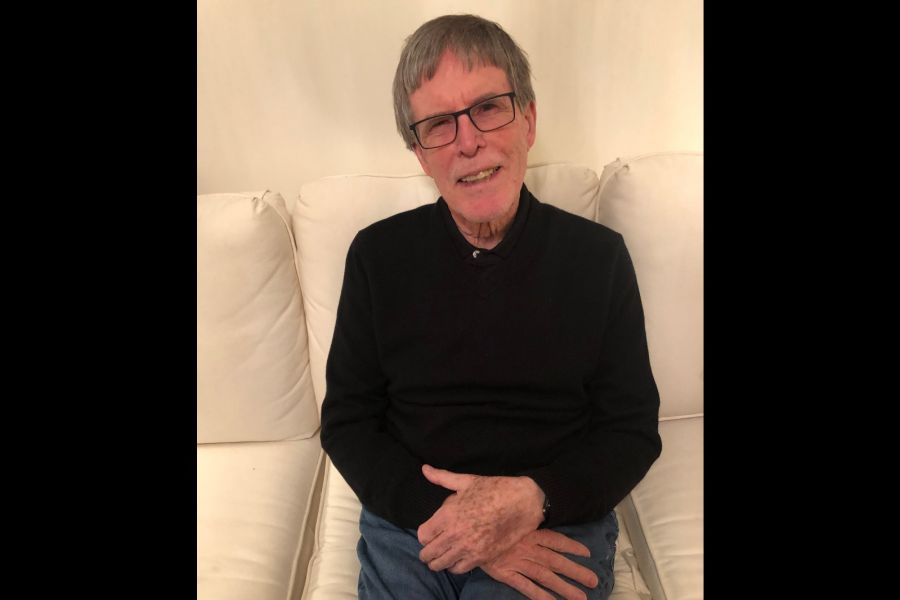This is the first in an exclusive new regular column by NOTL’s Dr. William Brown. A graduate of the University of Western Ontario school of medicine, Brown trained as a clinical neurologist in Toronto and later as a scientist at the University of Toronto and then Oxford University before returning to London, Ont., as a clinical neurologist and neurophysiologist. His primary interest was in nerve and muscle diseases. Later, he moved to Tufts University Medical Center in Boston, before finally returning to Canada and McMaster. His interests remain in clinical neurology but in recent years expanded to include the subjects of evolution, especially the story of human origins. Brown has published five books and is now completing two more. In Niagara-on-the-Lake, he and others founded the Infohealth series 14 years ago. It now runs in conjunction with McMaster’s School of Medicine in Niagara.
It’s that time of year, when once again news outlets from CNN to the BBC as well as local forecasters, review the best and worst of the year past and hopes for the coming year.
Top science journals, such as Nature and Science, do the same, by highlighting the best of science in the last year and or in this case, the last decade (2010-2020) or if you’re Nature and it’s your 150th anniversary, the best in Science for a century and a half.
We just finished our second annual review of the Nobel prizes in physics, medicine (physiology), chemistry, economics, peace and literature at the NOTL library in November and December of 2019. While the peace and literature prizes tend to award contemporary work, prizes in science often award work carried out several decades earlier, probably because of the innate caution of Nobel committees, which want to see how a body of work plays out in spawning other meaningful work and holds together in the face of later challenges.
That was certainly the case for this year’s science prizes where the relevant work was carried out toward the end of the 20th century. Sometimes however, an achievement is so startling that a Nobel is awarded for work within a few years of the award.
This was the case for the detection of gravitational waves – ripples in space-time created by the collision of a pair of black holes – which were first detected in 2015 and the discovery rewarded with a Nobel two years later in 2017, by which time there had been several similar discoveries and one spectacular collision of a pair of neutron stars producing in its wake, a kilonova explosion.
This year the editors of Science and Nature mostly agreed on their choices for studies with the most impact and relevance in science in 2019. Topping the charts was the discovery of a gargantuan black hole – the size of our entire solar system – whose circular shape matched predictions by Albert Einstein’s theories about general relativity and gravity.
Accomplishing this herculean task involved negotiating time on radio telescopes scattered around the globe and synchronized together using atomic clocks, to create a giant virtual Earth-wide telescope capable of detecting wavelengths in the millimetre range created by radiation spuing about the event horizon rimming the black hole.
Another choice was the impact of the giant asteroid that struck the Yucatan peninsula region of present-day Mexico 66 million years ago, wiping out the dinosaurs and roughly 70 per cent of the world’s species. Two complementary studies, one an 835-metre core drilled through the crater, revealed in startling minute-to-minute detail the chain of events, beginning with molten rock and a giant tsunami, which within that first day, washed massive amounts of debris into the crater, and events yet to come over the following thousands and millions of years.
Thousands of miles away from the impact site, a second study in North Dakota, revealed that within an hour of the collision, seismic activity triggered by the collision, created powerful waves of water, which surged up long ago ancient rivers. Among other impacts, this left glass particles loaded with iridium from the impact site embedded in the gills of ancient fish. Some asteroid, some impact!
Life recovered surprisingly quickly for plants and animals, although mammals were rat-sized affairs to begin with. Within 100,000 years, their sizes began to increase, especially so after legume-bearing plants appeared some 700,000 years later. However, it took a million years for most marine life to recover. This study, like so many these days, was international in scope, involved many disciplines and, like the black hole study above, illustrates the power of big science to solve mysteries while creating new mysteries in their wake.
Other worthy studies in 2019 include:
* The revealing picture of a Denisovan, a cousin species to Neanderthals and modern humans, whose facial appearance was based on the pattern of methylation of bases in the DNA of a Denisovan girl who lived 160,000 years ago.
* Claims by Google that quantum computers harnessing the power of particle physics can handle far more challenging problems, in much less time, compared to conventional supercomputers.
* Recent evidence that recovery of severely malnourished children, depends on creating a mature microbiome in the gut of the children, as well as proper food.
* The development of several lifesaving drugs for the killer virus Ebola.
* Yet more evidence that artificial intelligence has become the master of even the most expert humans in games such as Go and, most recently, six-hand poker.
* Growing evidence of the “canary in the mine” warning posed by 30 per cent loss of bird species across the board in North America as a result of pollution, climate change and severe losses of habitat.
* And most encouraging, evidence that Americans are finally waking up to the threat of global climate change created by humans.
None too soon for our southern neighbours, as well as Canada!










